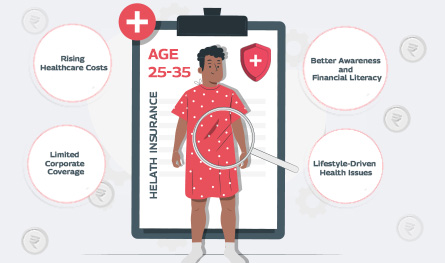Related Articles
 Jan 08, 2025
Jan 08, 2025
Is Varicose Vein surgery covered under the health insurance policy in India
 Health Insurance
Health Insurance
.png)
April 17 marks World Haemophilia Day, observed annually to raise awareness about haemophilia and support those affected by bleeding disorders. This day highlights the importance of early diagnosis, treatment, and access to medical care. Having a health insurance plan can help manage the costs of treatment and ensure timely medical support. Let’s explore the history and significance of World Haemophilia Day in this post.
.png)
Haemophilia is a rare condition where blood does not clot properly due to a lack of essential blood-clotting proteins. World Haemophilia Day is observed globally to raise awareness, improve diagnosis, and provide better treatment options for those affected. This day brings together people with bleeding disorders from around the world to promote access to medical care. Having a health insurance policy can help cover the cost of treatment and ensure timely medical support.
Haemophilia was first acknowledged in the 10th century when doctors discovered people, particularly men, who suffered profuse bleeding just after some minor cuts and injuries. Major breakthrough couldn’t be done at that time about this illness due to limitations of technology.
It was seen that many prominent figures in history at that time had haemophilia, including royal families in Europe.
Philadelphian doctor John Conrad Otto in 1803 started investigating people whom he described as bleeders and discovered it as a genetic disorder. He stated that the disorder was genetically transferred from healthy mothers to their male children at birth. In 1937, Haemophilia was classified into two categories: A and B.
There is no specific treatment of haemophilia found so far. However, the condition can be managed by using regular injection for clotting factors to restrict impulsive bleeding episodes.
17th April was established as World Haemophilia Day by the World Federation of Haemophilia in 1989. The aim of the day is to promote awareness of the condition and to create funds for those who cannot afford treatment.
World Haemophilia Day is important because:
If you are bleeding due to minor cuts, it is not a very big thing. However, if you have severe haemophilia, internal bleeding can be serious. Moreover, if the bleeding is in the ankles, knees or in the elbows, it can be serious as it may harm your organs and tissues, which can be fatal.
Haemophilia is a rare bleeding disease with no permanent treatment at present.
Most blood collection centres refuse to accept blood from donors who are patients of haemophilia because of the dangers of bleeding. It is rather good for such people not to donate blood so that they could safeguard their veins.
A carrier of haemophilia is a woman carrying the haemophilia gene through an abnormal X chromosome

Paybima Team
Paybima is an Indian insurance aggregator on a mission to make insurance simple for people. Paybima is the Digital arm of the already established and trusted Mahindra Insurance Brokers Ltd., a reputed name in the insurance broking industry with 17 years of experience. Paybima promises you the easy-to-access online platform to buy insurance policies, and also extend their unrelented assistance with all your policy related queries and services.
.png)
When you're planning to take a personal loan, knowing your monthly EMI in advance can help you stay financially prepared. The Muthoot Personal Loan EMI Calculator is a simple and efficient tool that provides instant EMI estimates based on your loan amount, interest rate, and tenure.


Relocating your two-wheeler to a different state needs to follow many procedures. Depending on the duration for which you are moving to the new place, it becomes necessary to transfer your vehicle papers if it is for more than a year. Although tedious, the process of relocating vehicles can become easy if you follow certain tips mentioned in this post. Read on!


In what’s being called a quiet healthcare revolution, India’s young working professionals are reportedly making the most health insurance claims – outpacing even senior citizens. Surprised? So are the insurance providers. Young adults ranging between 25 and 35 years, who are often assumed to be in peak health, are now dominating the charts in health insurance claims by age.


If you think lifestyle-related health issues only show up after 40, think again. Youth no longer guarantees immunity. Today’s 25 - 35 age group is increasingly facing medical issues that only plague older adults. The reason? Long working hours at the desk, deliveries on speed dial, and a social life that rarely includes a decent amount of sleep are some of the reasons for the early onset of medical conditions like diabetes, anxiety, and hypertension.
